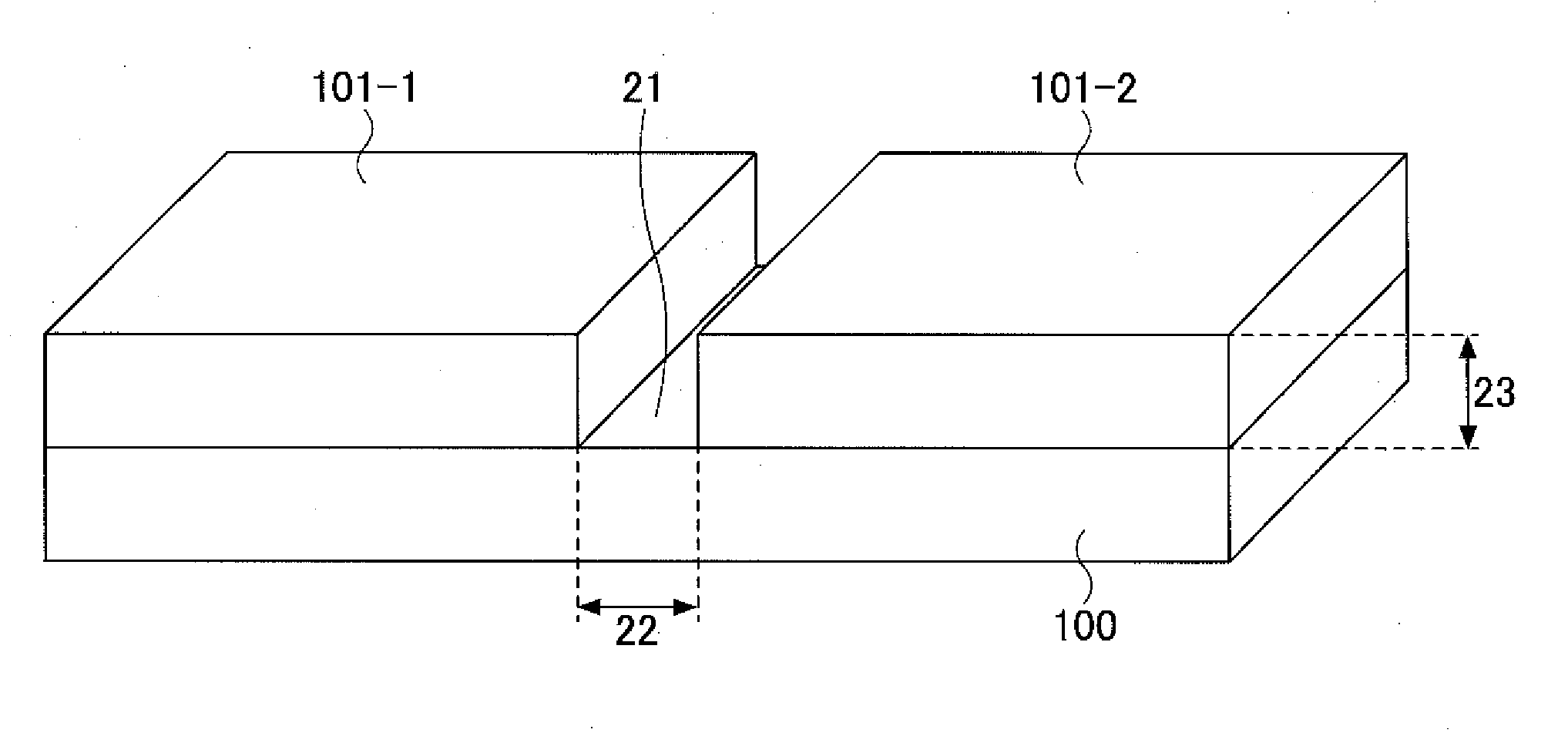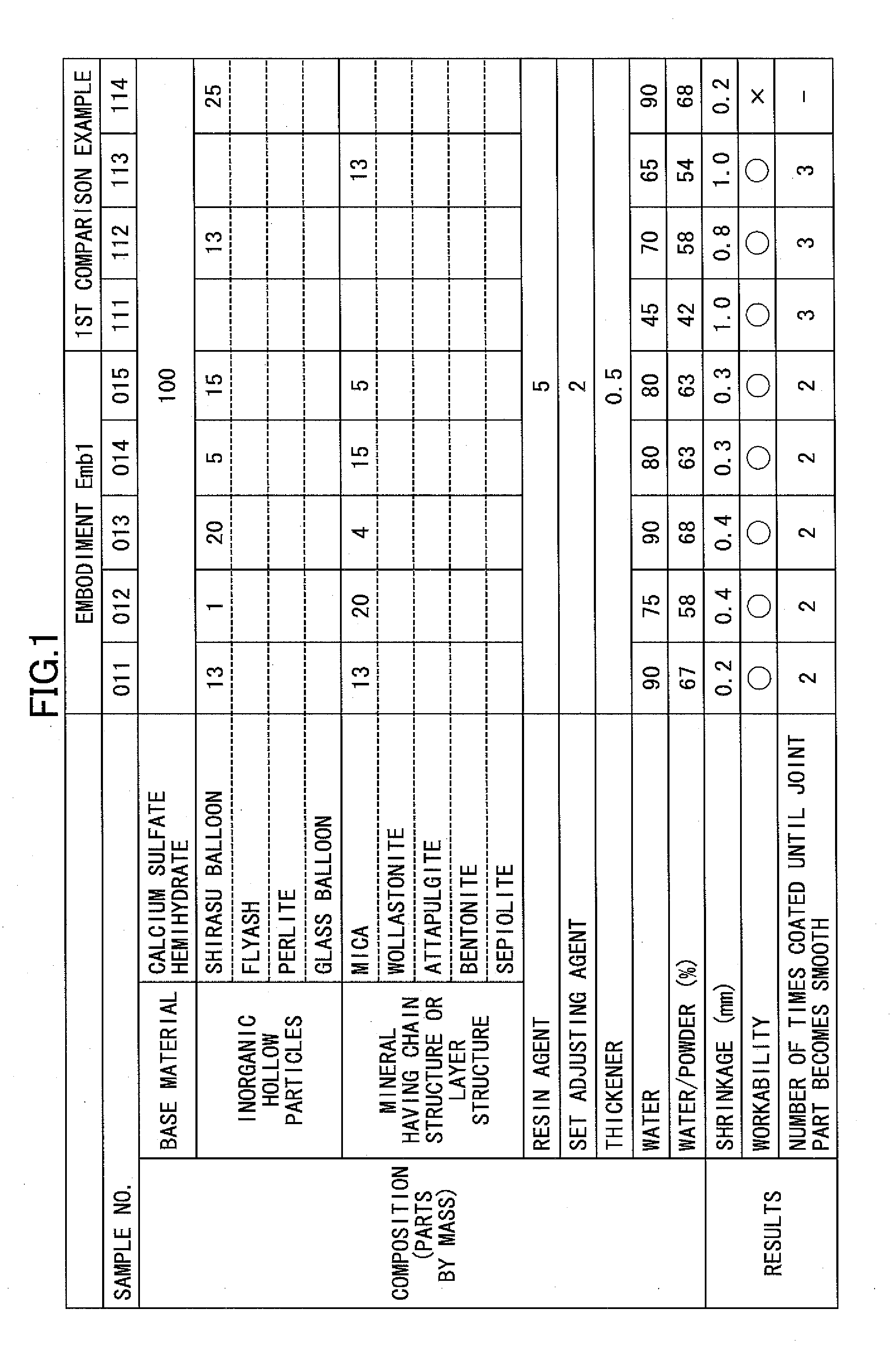Joint filler composition
a filler composition and composition technology, applied in the field of filler compositions, can solve the problems of shrinkage, cracks, and contraction of filler compositions, and achieve the effect of reducing shrinkage and satisfying workability
- Summary
- Abstract
- Description
- Claims
- Application Information
AI Technical Summary
Benefits of technology
Problems solved by technology
Method used
Image
Examples
embodiments
[0042]Next, a description will be given of embodiments of the present invention and example embodiments, by referring to the drawings.
[0043]Example embodiments Emb1 through Emb4 were created with a mass ratio of materials forming a joint filler composition illustrated in FIGS. 1 through 4, by mixing these materials, in order to obtain a joint filler composition using the joint filler composition in accordance with one aspect of the present invention. FIG. 1 is a diagram illustrating the mass ratio of materials forming the joint filler composition in the example embodiment Emb1 and a first comparison example, and FIG. 2 is a diagram illustrating the mass ratio of materials forming the joint filler composition in the example embodiment Emb2 and a second comparison example. FIG. 3 is a diagram illustrating the mass ratio of materials forming the joint filler composition in the example embodiment Emb3 and a third comparison example, and FIG. 4 is a diagram illustrating the mass ratio of...
example embodiment emb1
[0050]As described above, this example embodiment Emb1 used calcium sulfate hemihydrate as the base material. In addition, Shirasu Balloon was used as the inorganic hollow particles, and mica was used as the mineral having the chain structure or the layer structure. The amounts of the inorganic hollow particles and the mineral having the chain structure or the layer structure that are added were varied in order to evaluate the performance. Further, a first comparison example in which the inorganic hollow particles and the mineral having the chain structure or the layer structure are not added, or only one of the inorganic hollow particles and the mineral having the chain structure or the layer structure is added, were also evaluated. In FIG. 1 and each of FIGS. 2 through 4, 6 and 7 which will be described later, an entry that is blank indicates that the amount of the corresponding material that is added is zero (0).
[0051]In samples No. 011 through No. 015 of the example embodiment E...
example embodiment emb2
[0053]As described above, this example embodiment Emb2 used calcium sulfate hemihydrate as the base material, similarly as in the case of the example embodiment Emb1 described above. However, flyash, perlite or glass balloon was used as the inorganic hollow particles, and wollastonite, attapulgite, bentonite or sepiolite was used as the mineral having the chain structure or the layer structure. The amounts of the inorganic hollow particles and the mineral having the chain structure or the layer structure that are added were varied for a second comparison example in order to evaluate the performance.
[0054]In samples No. 021 through No. 025 of the example embodiment Emb2, the shrinkage was 0.5 mm or less and small, and the workability was satisfactory (“o”), as illustrated in FIG. 2. In addition, the number of times the joint filler composition needs to be coated in order to make the joint part 11 flat and aligned to the surface of the adjacent base members 101-1 and 101-2 may be redu...
PUM
| Property | Measurement | Unit |
|---|---|---|
| grain diameter | aaaaa | aaaaa |
| grain diameter | aaaaa | aaaaa |
| mass ratio | aaaaa | aaaaa |
Abstract
Description
Claims
Application Information
 Login to View More
Login to View More - R&D
- Intellectual Property
- Life Sciences
- Materials
- Tech Scout
- Unparalleled Data Quality
- Higher Quality Content
- 60% Fewer Hallucinations
Browse by: Latest US Patents, China's latest patents, Technical Efficacy Thesaurus, Application Domain, Technology Topic, Popular Technical Reports.
© 2025 PatSnap. All rights reserved.Legal|Privacy policy|Modern Slavery Act Transparency Statement|Sitemap|About US| Contact US: help@patsnap.com



